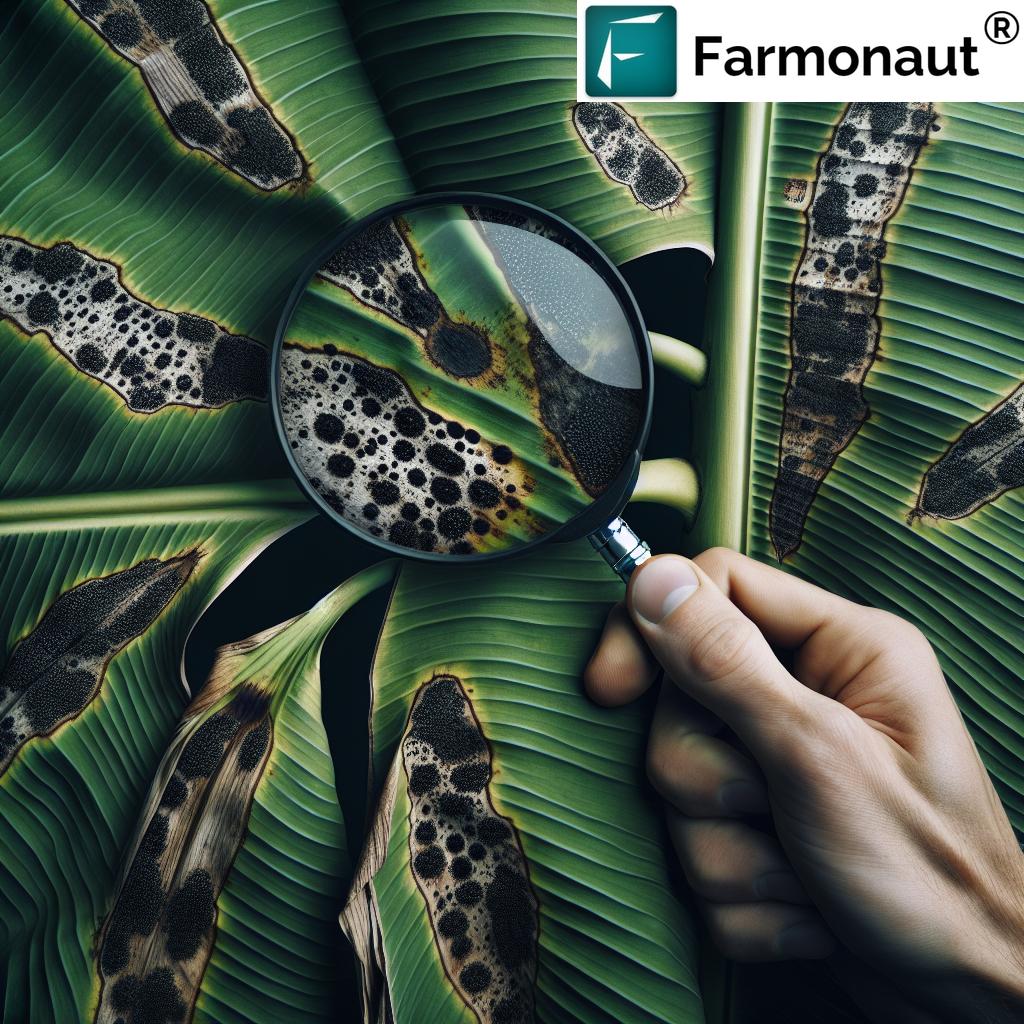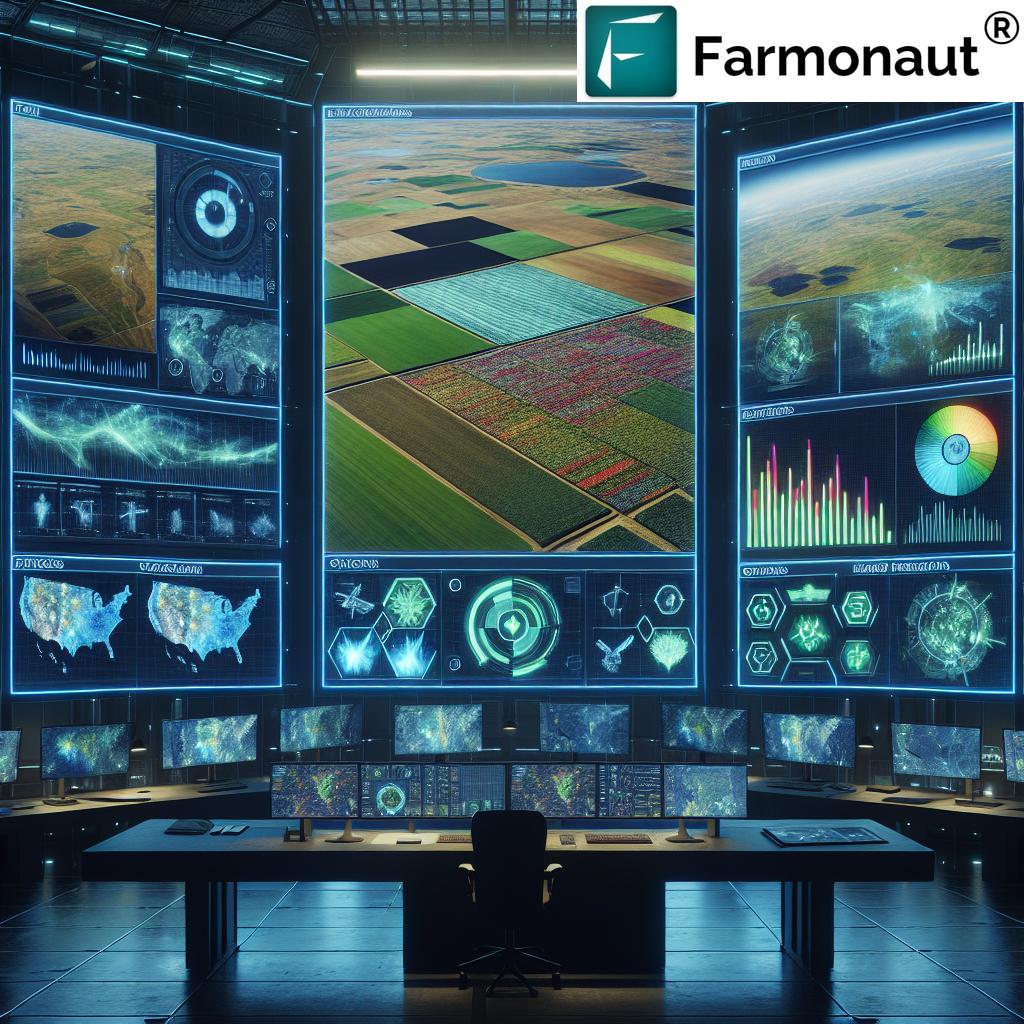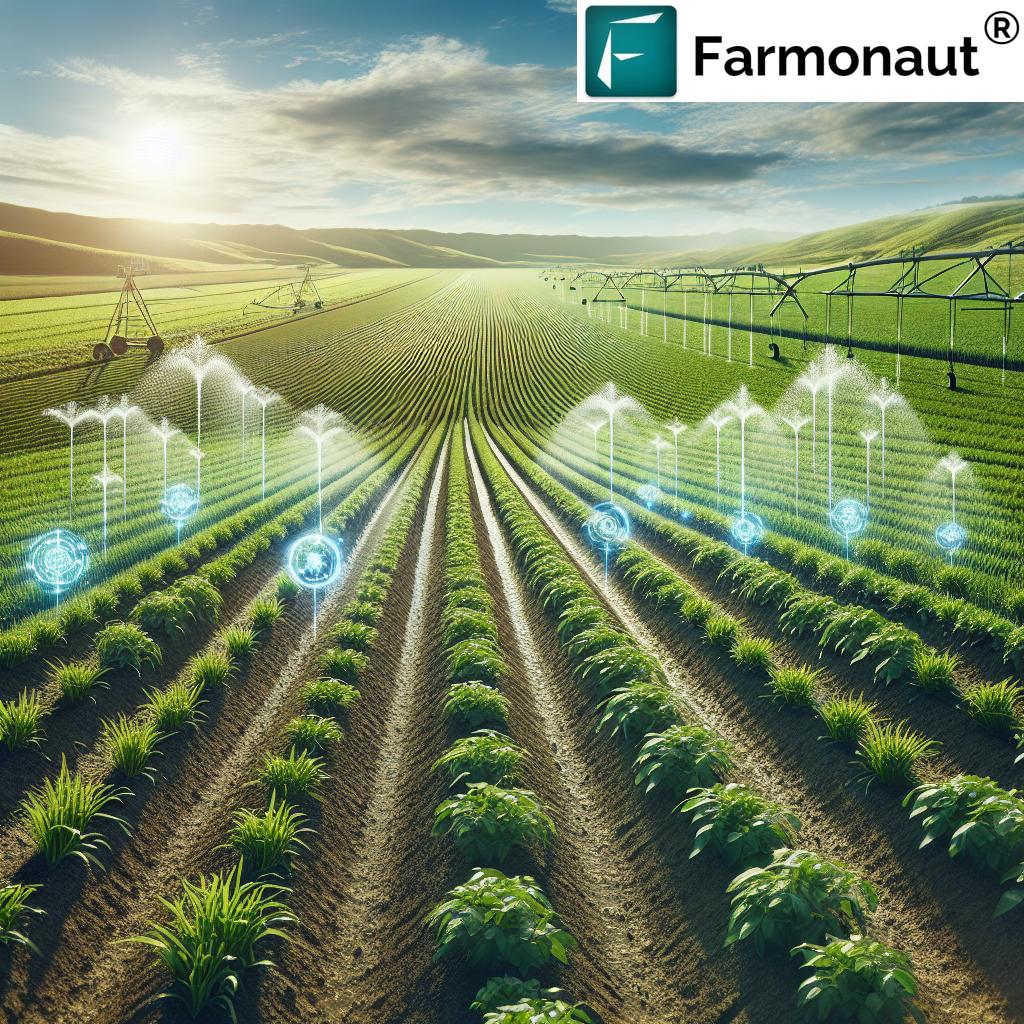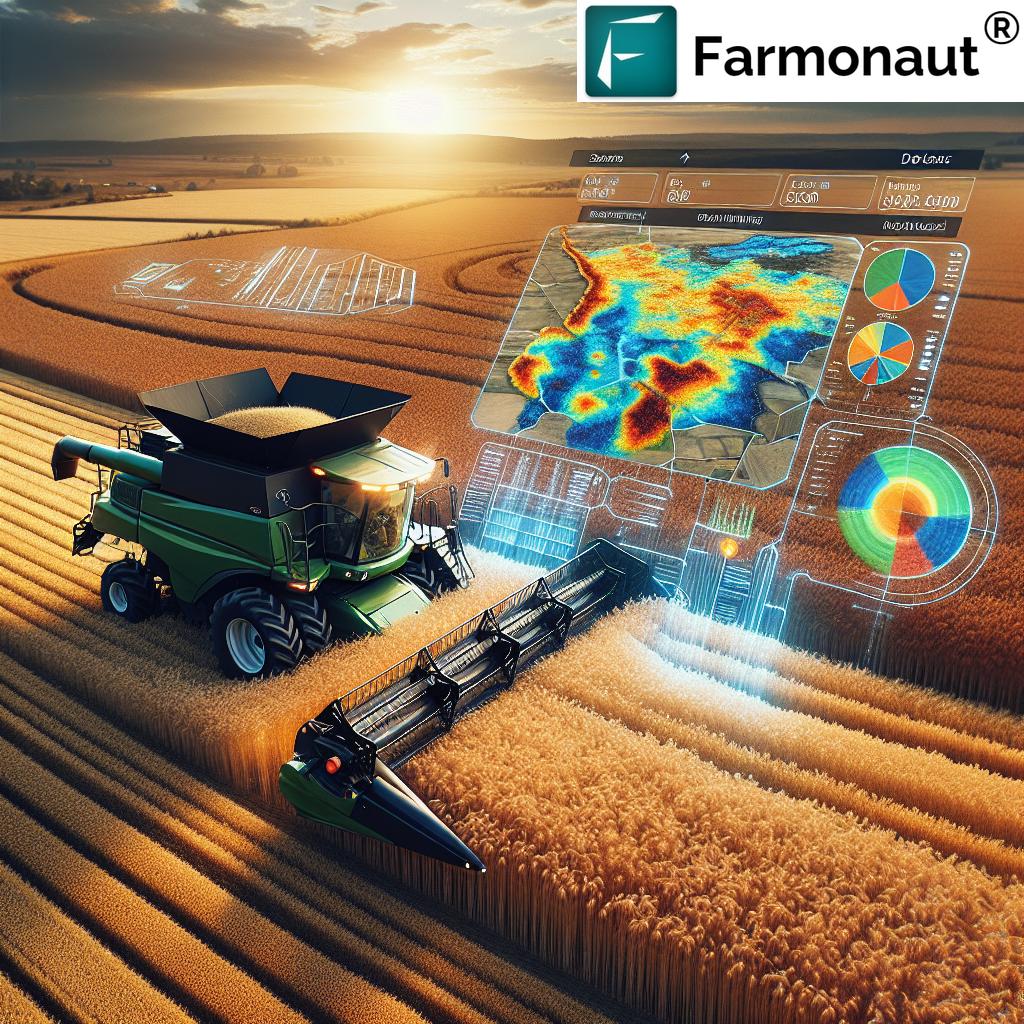Modern Technology in Agriculture: 7 Shocking Farm Breakthroughs
Introduction: The Transformative Shift in Modern Agriculture
As we stand at the crossroads of technology and tradition, modern agriculture is undergoing a transformative shift. The fusion of precision farming technologies, artificial intelligence (AI), automation, smart irrigation systems, and advanced data analytics in farming is driving a new era of efficiency, sustainability, and exceptional crop yields.
These emerging innovations are addressing key challenges in farming—from labor shortages to environmental impact—while empowering farmers and agribusinesses globally. We are not merely observing change; we are actively integrating these technologies to cultivate a future in which food production is smarter, more productive, and sustainable.
The 7 Shocking Farm Breakthroughs Transforming Agriculture
Let’s explore the most significant and game-changing modern farming innovations redefining the agricultural landscape today:
- Precision Farming Technologies
- Smart Irrigation Systems
- Agriculture Automation and Robotics
- AI in Agriculture & Data Analytics in Farming
- Drones and Aerial Crop Monitoring Sensors
- Controlled Environment Agriculture and Vertical Farming Solutions
- IoT-Based Soil and Crop Monitoring Sensors
As we break down each of these revolutionary advancements, you’ll see how they enhance crop efficiency, optimize resources, reduce waste, and foster sustainable agriculture practices.
Don’t miss the comparative table below for a side-by-side overview of their productivity and sustainability impact!
Precision Farming Technologies: The Foundation for Sustainable and Efficient Farming
Precision farming is the backbone of modern agriculture’s evolution. By using technologies like GPS, IoT sensors, and AI, we can monitor field variability and apply water, fertilizers, and pesticides accurately.
- Key Advantages:
- Enables targeted irrigation, fertilization, and pest management
- Reduces waste and environmental impact
- Improves crop health and yields
For example, some systems use real-time soil sensors and satellite crop monitoring data to adjust applications based on current field conditions. Not only does this conserve resources, it ensures that each plant receives optimal care—directly translating into improved productivity.
- Employs AI-based decision-making to suggest best planting, irrigation, and harvest times
- Uses data analytics in farming for continuous improvement of resource allocation
- Allows for farmers to remotely monitor field health via mobile/web applications

Farmonaut’s platform makes precision agriculture affordable by leveraging satellite imagery and AI to deliver actionable insights without expensive hardware (Learn more about large-scale farm management solutions).
Smart Irrigation Systems: Revolutionizing Water Management in Agriculture
Traditional watering schedules often lead to over-irrigation or waste. Smart irrigation systems use soil moisture sensors and real-time weather data to automatically adjust water delivery where and when it’s needed. This advancement is dramatically reshaping how we:
- Conserve water—sometimes achieving up to 50% reduction in water usage
- Lower operational costs through targeted irrigation
- Improve crop health and resilience
Examples:
- Soil and weather sensors control irrigation valves to deliver water directly to roots, maximizing efficiency and reducing disease risk.
- IoT-based systems send alerts to our smartphones about optimal irrigation timing.
Ready to make every drop count? Explore the data-driven possibilities with Farmonaut’s precision crop health and irrigation monitoring. (See how to get started in the Farmonaut App).
Agriculture Automation and Robotics: Taking Productivity to New Heights
Automation and robotics are revolutionizing farming by handling labor-intensive tasks:
- Self-driving tractors/machinery—operate continuously, efficiently tilling, planting, and harvesting fields
- Robotic harvesters—pick fruits and vegetables at precise ripeness, minimizing food waste
- Automated drones and machines—monitor fields, plant seeds, apply inputs, and even identify pests or diseases autonomously
By reducing reliance on manual labor, automation not only increases productivity but also:
- Minimizes errors and waste
- Allows for around-the-clock field monitoring
- Optimizes resource allocation through precise use of inputs
Farmonaut’s fleet management tools help optimize agricultural machinery logistics, further reducing operational costs and environmental footprint (Learn more about Fleet Management).
AI in Agriculture & Data Analytics in Farming: The Power of Informed Decisions
Artificial intelligence (AI), machine learning, and big data analytics are turning the tide on traditional farming methods:
- Vast datasets—collected from sensors, satellites, drones, and farm machinery—are analyzed to generate actionable insights
- Predictive models suggest optimal planting times, anticipate pest infestations, and forecast potential crop yields
- AI-powered systems target specific areas of a field for irrigation, fertilization, or pesticide application, maximizing output while conserving resources
Here’s how this empowers us:
- Farmers
can make informed, data-driven decisions instead of relying on guesswork - Real-time crop health monitoring identifies issues promptly for optimal intervention
- Resource optimization keeps input costs and waste low
Farmonaut’s Jeevn AI Advisory System delivers real-time weather, crop, and pest insights straight to your smartphone or computer, boosting productivity (See features in the Farmonaut platform).
Drones and Aerial Crop Monitoring Sensors: Eyes in the Sky for Modern Fields
Aerial drones equipped with multispectral sensors and cameras are providing new perspectives for agricultural management:
- Monitor crop growth and identify issues like pest infestations, diseases, or water stress across vast areas rapidly
- Collect high-resolution imagery for precision application of treatments (fertilizers, pesticides, etc.)
- Reduce chemical use and promote sustainable agriculture practices by targeting only affected zones
Aerial imaging also:
- Improves resource planning by revealing field variability
- Supports yield estimation for better logistics and supply chain management
Looking to monitor crop health without stepping onto the field? Farmonaut’s satellite-based solutions bring aerial analytics to your fingertips.


Controlled Environment Agriculture and Vertical Farming Solutions: Farming Beyond Fields
Controlled environment agriculture (CEA), including vertical farming, is the answer to many environmental and urban challenges:
- Grow crops in vertically stacked layers inside buildings, warehouses, or shipping containers
- Maintain complete climate control—light, temperature, humidity, and CO2 optimization for year-round production
- Reduce land use and exposure to soil-borne diseases, pests, and unpredictable weather conditions
Hydroponics or aeroponics is used to cultivate crops without soil, significantly conserving water and space. While increased energy usage for climate control and lighting is a consideration, using renewable energy can help offset the impact.
For buyers seeking to track the sustainability of their food, blockchain-based traceability solutions from Farmonaut ensure products are environmentally friendly and transparent throughout the supply chain. (Explore Product Traceability)
IoT-Based Soil and Crop Monitoring Sensors: Precision at the Root Level
Soil sensors, crop sensors, and IoT devices are taking resource management to new granular levels:
- Monitor soil composition (moisture, temperature, pH, nutrient levels) in real time
- Detect stress or disease on plants—targeting fertilization, irrigation, or crop protection exactly where needed
- Enable automatic adjustment of watering/fertilizing schedules in conjunction with AI analysis
- Reduce input costs, minimize environmental impact, and boost yields
With such integration, we’re able to quickly address critical issues, improve efficiency, and support sustainable agriculture practices.
Leveraging satellite remote sensing, Farmonaut’s platform delivers precision insights into field-level soil and crop conditions (API access for developers).
Comparative Benefits Table: Modern Technology in Agriculture
| Technology Name | Core Feature | Estimated Productivity Increase (%) | Sustainability Impact (Score/5) | Example Crop Application |
|---|---|---|---|---|
| Precision Farming | Field variability management via GPS/AI | 20-30% | 5 | Wheat, Corn, Rice |
| Smart Irrigation | Sensor-based water management | 10-25% | 5 | Vegetables, Fruits |
| Automation & Robotics | Autonomous machinery & robotic harvesters | 15-25% | 4 | Tomatoes, Strawberries |
| AI & Data Analytics | Predictive analytics for planting/yields | 15-30% | 5 | Soybean, Potato |
| Drones & Aerial Imaging | Aerial field monitoring and mapping | 10-18% | 4 | Cotton, Sugarcane |
| Controlled Environment Agriculture | Fully controlled indoor/vertical farming | 30-50% | 5 | Lettuce, Leafy Greens |
| IoT-Based Soil & Crop Sensors | Real-time soil and crop health monitoring | 10-22% | 5 | Maize, Barley |
Farmonaut: Driving Affordable Precision Agriculture Worldwide
At the heart of this revolution is Farmonaut, a pioneering agri-tech company bringing advanced satellite-based farm management solutions to the world via Android, iOS, web, and API integration.
What Sets Farmonaut Apart?
- Satellite-Based Crop Health Monitoring: Multispectral satellite images offer real-time data on crop health (NDVI), soil moisture, and vegetation vigor, helping us make prompt, science-driven decisions to optimize yields, reduce waste, and conserve resources.
- Jeevn AI Advisory System: Get real-time, personalized insights into weather, crop condition, and advanced strategies directly on your device.
- Blockchain-Based Traceability: Track your food’s journey with secure, transparent records from the farm to the table. (Learn more about product traceability solutions)
- Fleet and Resource Management: Manage agricultural machinery efficiently, cutting operational costs while enhancing productivity. (Discover fleet management benefits)
- Carbon Footprinting: Support sustainability with real-time carbon emission tracking and reporting for regulatory compliance and environmental stewardship.
Learn more about carbon footprinting. - Crop Loan and Insurance Verification: Enhance access to financial products for farmers, with satellite-based farm verification reducing fraud and improving loan/insurance processing.
Explore crop loan and insurance solutions.
Accessible, Scalable, and Affordable
Farmonaut operates on a subscription-based model with flexible pricing. The web and mobile app suite is scalable for individual farmers, large agribusinesses, and public institutions alike.



API Access for Developers and Businesses
Integrate advanced satellite and weather data into your own systems—perfect for research, agritech development, and institutional use.
Access the API | Read the developer docs
Subscription Options
Challenges and Considerations When Adopting Modern Farming Innovations
While modern agriculture technology brings remarkable benefits, we must be mindful of several challenges:
- High Initial Costs: Investing in equipment (sensors, automation, drones) and infrastructure can be prohibitive, especially for smaller farms.
- Digital Literacy: Effective adoption often requires new skill sets and digital fluency among farmers and workforce.
- Labor Market Impact: Automation may reduce demand for traditional labor, necessitating workforce retraining and transition planning.
- Sustainability Trade-offs: Some technologies (e.g., climate control in vertical farming) increase energy use and may require renewable sources to maintain environmental gains.
- Data Access & Equity: Ensuring that innovation in agriculture does not widen the gap between large and small growers is essential for food security and social stability.
To ensure sustainable, inclusive, and holistic growth, these challenges must be addressed through supportive policy, affordable technology, and capacity building.
Frequently Asked Questions (FAQ) on Modern Technology in Agriculture
1. What is precision farming and how does it enhance agriculture?
Precision farming refers to an advanced approach that leverages GPS, IoT sensors, and AI to monitor and manage field variability. It helps farmers apply water, fertilizers, and pesticides more accurately—improving efficiency, minimizing waste, and reducing environmental impact.
2. How do smart irrigation systems conserve water?
Smart irrigation systems use soil moisture and weather sensors to precisely control when and where water is delivered. This method dramatically reduces water usage—often by up to 50%—and ensures crops get just the right amount of hydration for optimal health and yield.
3. In what ways are drones used in farming?
Drones equipped with high-resolution cameras and sensors can spot areas under stress, pest infestations, or diseases, and even support precise spraying of treatments. This not only improves crop yields but also promotes a more sustainable use of agrochemicals.
4. What does controlled environment agriculture offer that traditional farming doesn’t?
Controlled environment agriculture (CEA) provides the ability to regulate temperature, humidity, and light. This allows for year-round production, reduced pesticide use, fewer disease outbreaks, and higher-density vertical farming near urban centers.
5. What makes Farmonaut unique for farmers?
Farmonaut stands out due to its use of affordable satellite-based crop monitoring, AI-driven advisory systems, blockchain-based traceability, fleet/resource management, and carbon footprint tracking. Its platforms are designed for ease of use and scalability, making precision agriculture accessible to all.
6. Can smallholder farmers benefit from these technologies?
Yes! Many solutions—including Farmonaut’s subscription-based tools—are tailored to be cost-effective and accessible for small and medium-sized farms, not just large agribusinesses.
7. How can I access Farmonaut’s services?
Farmonaut is available across web, Android, and iOS. Enterprise customers and developers can integrate Farmonaut’s services via APIs.
Conclusion: The Future of Modern Agriculture Is Data-Driven, Sustainable, and Highly Productive
The integration of modern technologies in agriculture is reshaping the industry at every level. From precision farming and smart irrigation systems to AI-powered decisions and drone-based monitoring, we are elevating both productivity and sustainability.
Platforms like Farmonaut are key enablers of this evolution—making essential tools available and accessible for farms of all sizes, improving crop yields while protecting vital natural resources. As modern agriculture continues this evolution, our ability to meet the world’s food needs—responsibly and efficiently—will be stronger than ever.
Join us on this journey toward smarter, more sustainable agriculture. The future of farming is not just about growing more—it’s about growing better, together.











